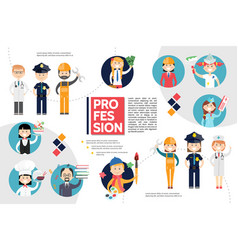The Effectiveness Of Your Industrial External Painting Job Is Carefully Tied To Weather-- Figure Out How It Can Either Support Or Prevent Your Preferred End Results
The Effectiveness Of Your Industrial External Painting Job Is Carefully Tied To Weather-- Figure Out How It Can Either Support Or Prevent Your Preferred End Results
Blog Article
Authored By-Rode Kidd
When you're planning an industrial exterior paint job, do not take too lightly the effect of climate on your outcomes. You need to take into consideration elements like temperature, humidity, and precipitation, as they can make or damage your paint job. For instance, did you recognize that optimal problems ask for specific temperature level varieties and moisture degrees? Failing to keep an eye on these aspects can lead to irregular surfaces and even damages to fresh paint. Understanding these aspects is vital to accomplishing a lasting, expert result. So, what commercial painting contractor near me should you watch out for?
Temperature level Considerations
When it comes to industrial exterior painting, temperature plays a critical duty in the result of your job. If you're repainting in extreme warmth, the paint can dry out too rapidly, resulting in problems like inadequate bond and unequal coatings. You intend to go for temperature levels between 50 ° F and 85 ° F for the best results. Below 50 ° F, paint may not cure effectively, while over 85 ° F, you run the risk of blistering and breaking.
Timing your project with the appropriate temperatures is vital. Start please click the following page in the morning or later on in the mid-day when it's cooler, particularly throughout hot months.
Additionally, consider commercial painting contractors near me can be considerably more than the air temperature, particularly on warm days. Utilize a surface thermostat to examine this before you begin.
If temperatures are unpredictable, keep an eye on the weather forecast. Abrupt temperature level drops or heat waves can hinder your strategies. You don't want to start repainting only to have the problems change mid-project.
Humidity Degrees
Moisture levels considerably impact the success of your business exterior paint task. When the humidity is expensive, it can hinder paint drying and curing, resulting in a series of issues like poor attachment and finish quality.
If you're planning a job during damp problems, you might find that the paint takes longer to completely dry, which can expand your project timeline and rise expenses.
Conversely, reduced humidity can also present obstacles. Paint may dry out as well swiftly, stopping correct application and leading to an unequal finish.
You'll wish to check the moisture degrees very closely to ensure you're working within the excellent variety, normally between 40% and 70%.
To get the best results, take into consideration utilizing a hygrometer to determine humidity prior to starting your project.
If you locate the degrees are outside the ideal array, you may need to readjust your routine or choose paints made for variable problems.
Always consult the producer's standards for specific referrals on humidity tolerance.
Precipitation Impact
Rainfall or snow can considerably interrupt your industrial external paint plans. When precipitation happens, it can get rid of newly used paint or produce an uneven coating. Ideally, you wish to select days with completely dry weather condition to make certain the paint adheres appropriately and cures effectively. If you're caught in a shower, it's ideal to halt the job and await problems to improve.
Moreover, snow can be a lot more destructive. Not only does it develop a damp surface, yet it can likewise decrease temperature levels, making it hard for paint to completely dry. This can bring about concerns like peeling or blistering down the line.
It's critical to check the weather forecast prior to beginning your project. If rainfall or snow is predicted, think about rescheduling.
Constantly bear in mind to permit adequate drying time in between layers, specifically if the weather remains uncertain.
Verdict
To conclude, watching on the weather condition is necessary for a successful industrial external painting job. By checking temperature level, humidity, and precipitation, you can ensure the most effective conditions for application and curing. Remember to prepare your work around beneficial weather and always follow supplier standards. With the appropriate method, you'll achieve a durable, lovely finish that can hold up against the elements. Don't allow the weather catch you unsuspecting-- stay educated and repaint wise!
